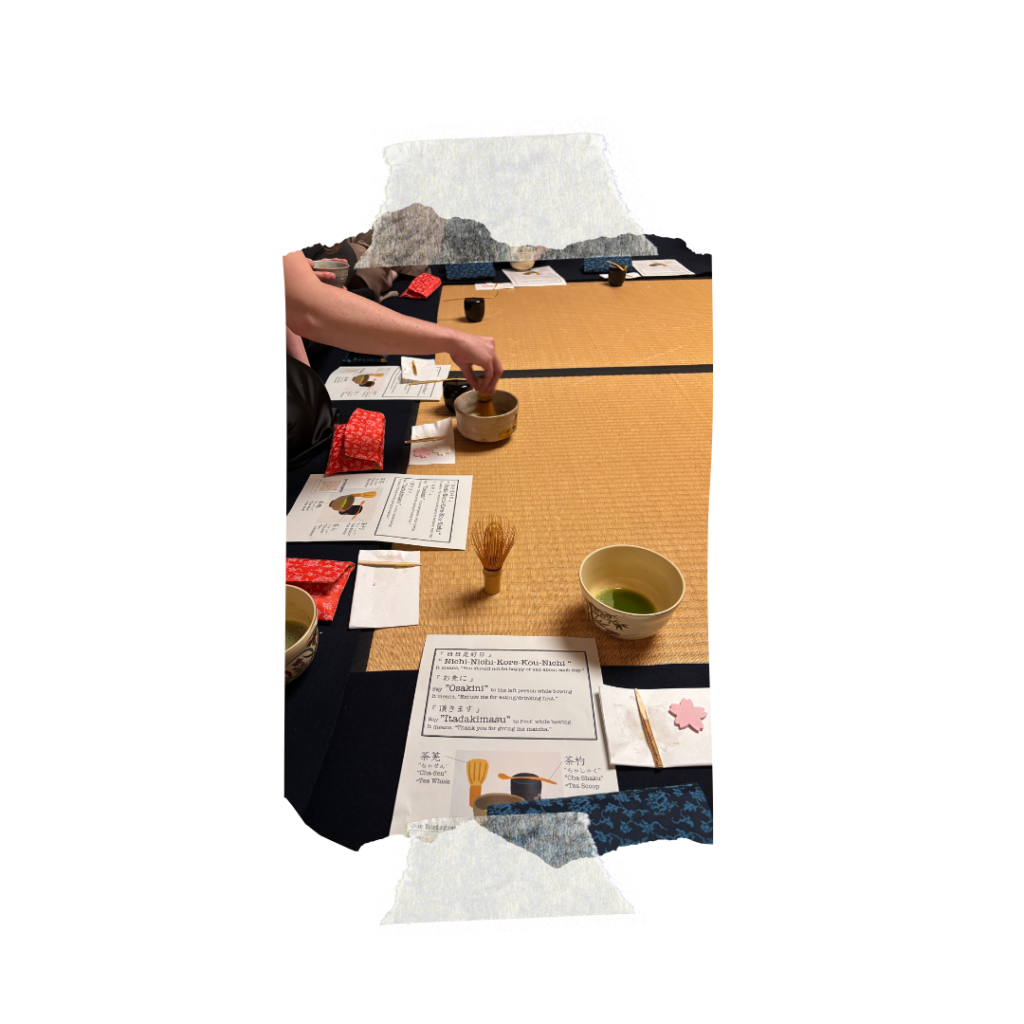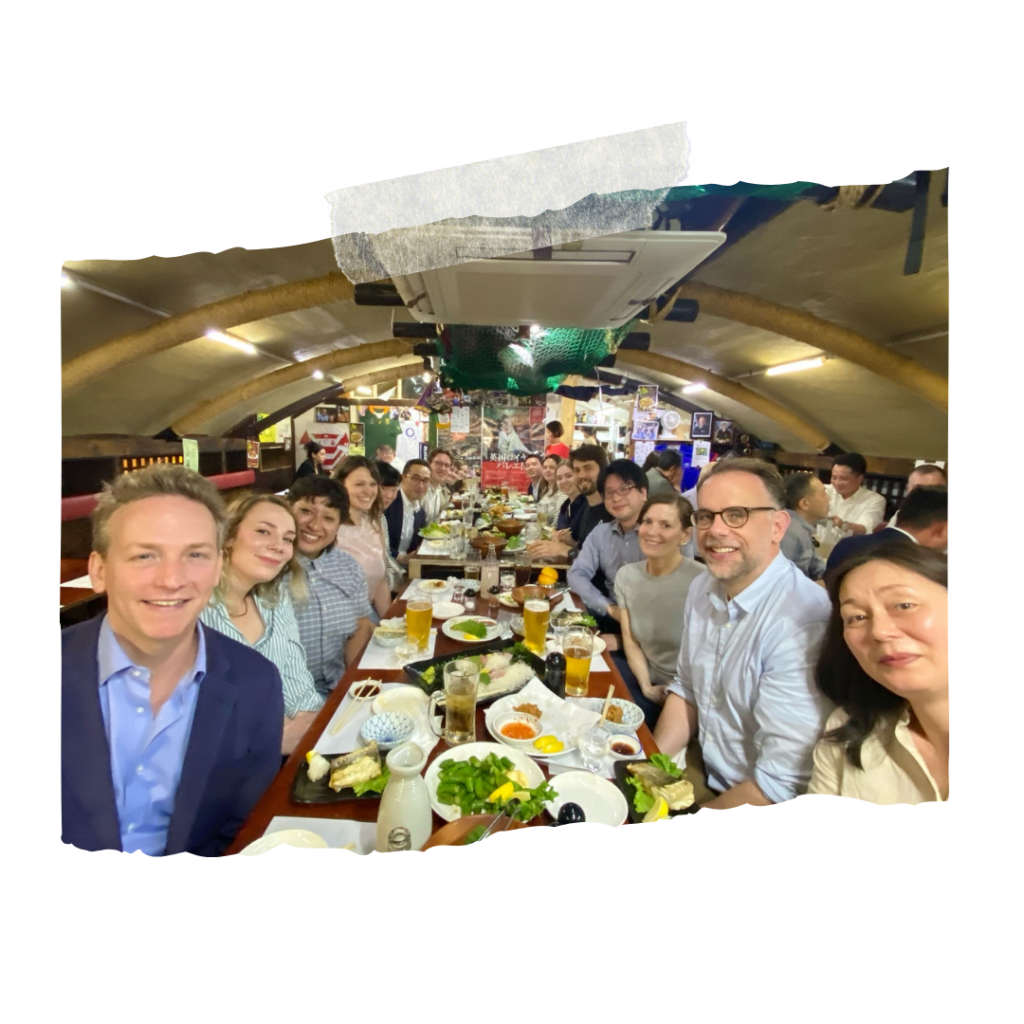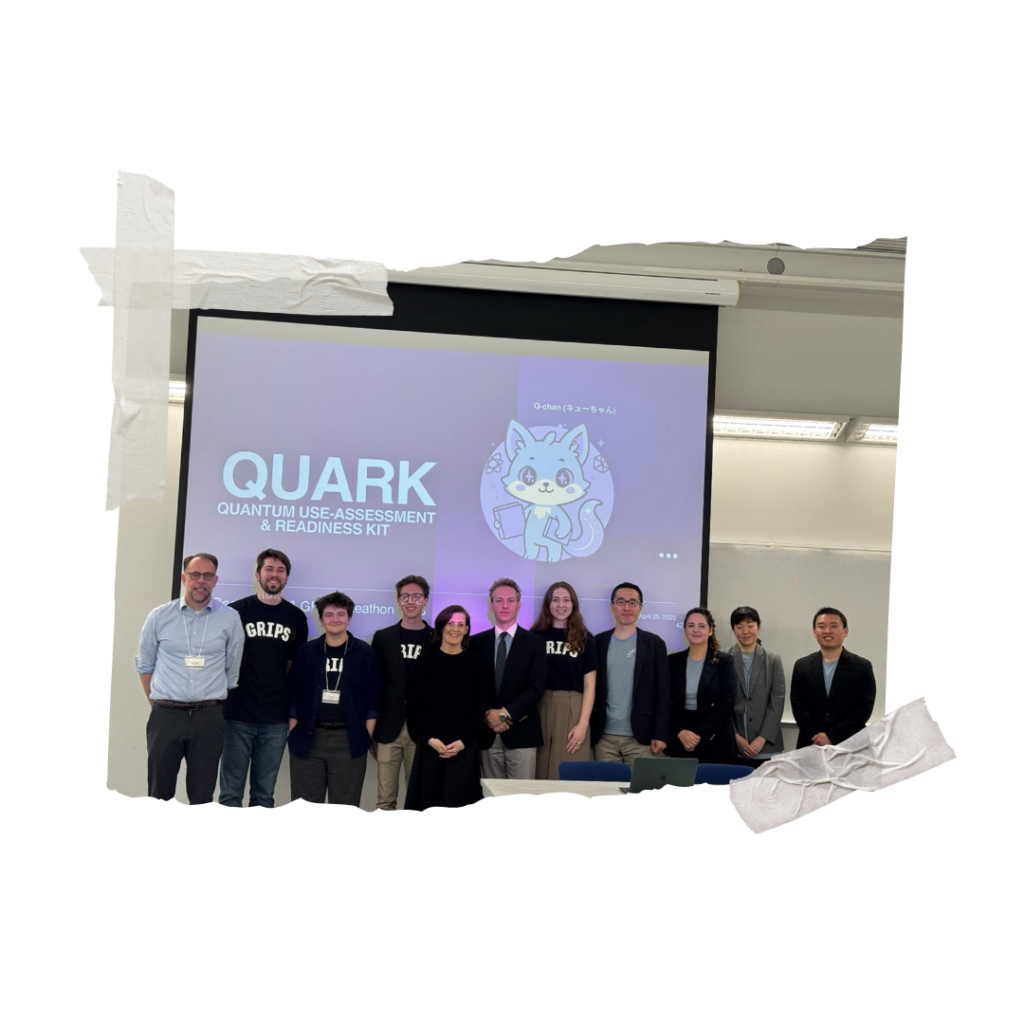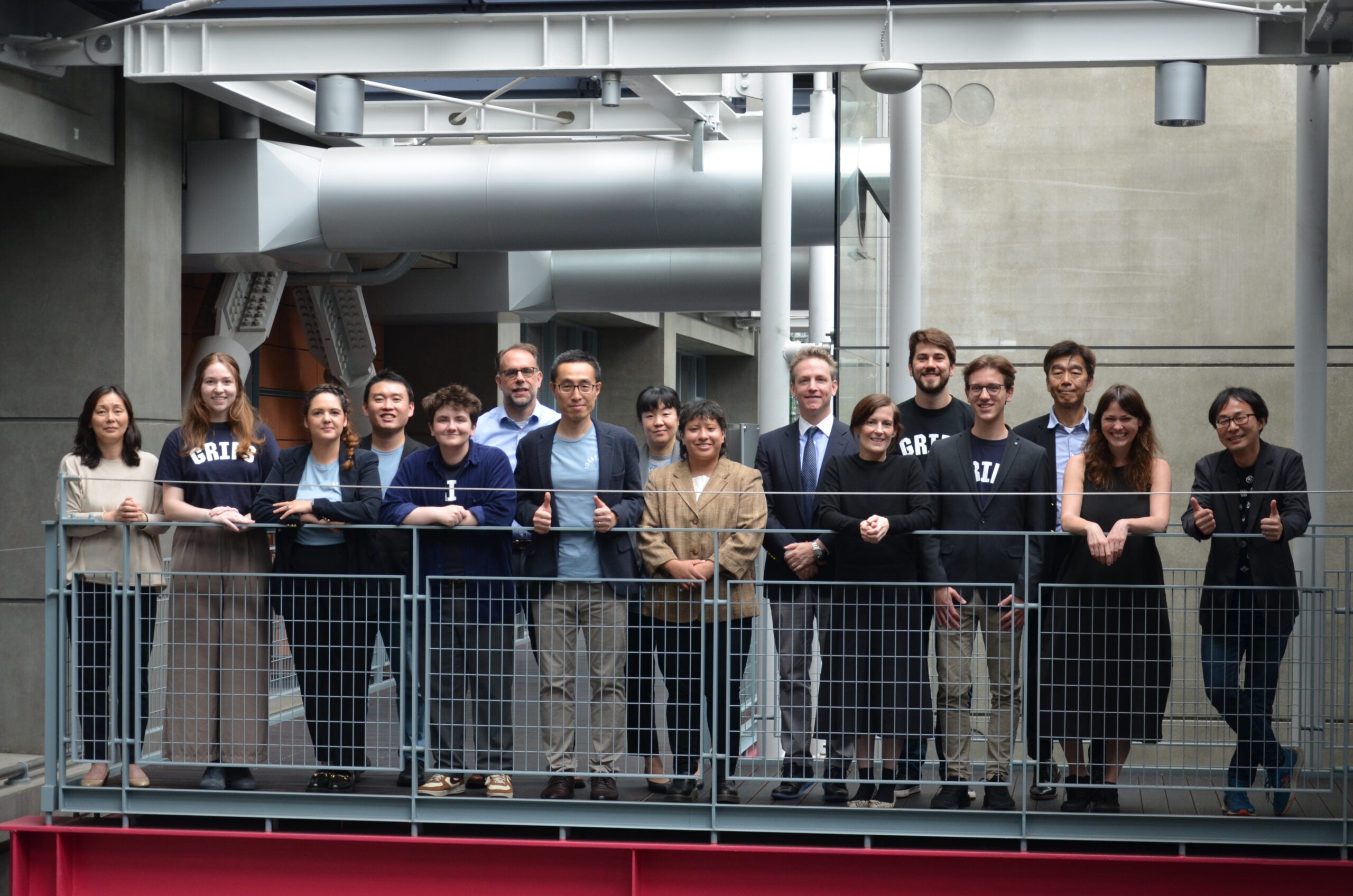Letters from Tokyo: McCourt students reflect on trip to drive novel tech policy solutions
McCourt students share their first-hand reflections from their participation in the Tech & Public Policy program’s annual Ideathon.
Four Georgetown University students participated in the McCourt School of Public Policy Tech & Public Policy program’s Ideathon , an intense, week-long program that asks two teams of graduate students to collaborate on an innovative solution to a complex and intentionally ambiguous tech policy problem. This year, students worked with peers at the National Graduate Institute for Policy Studies (GRIPS) in Tokyo on how the U.S. and Japan might proactively address a successful deployment by China of quantum communications technology that breaks encryption. As they brainstormed and figured out which ideas to pursue in the time crunch, students were able to learn more about quantum from experts at Georgetown as well as from a guest speaker at SoftBank. Students also learned more about the geopolitical considerations from a Japanese government official and through a wargaming exercise with a professor at GRIPS.
Day 1, CJ Larkin (MPP’26)

Students partaking in a traditional Japanese tea ceremony.
It’s the first day of Ideathon! This morning, we arrived at the GRIPS, our partner school for the Ideathon challenge, met the rest of the team and toured their beautiful campus. We kicked off programming with a guest speaker from Japan’s National Center of Readiness and Strategy for Cybersecurity. The speaker offered some first-hand insights into how cyber and tech policy works at the government level in Japan, and some guidance on incorporating emerging technology, such as quantum, into that work. After his talk (and a delicious udon lunch), we started brainstorming what aspects of quantum policy we want to address as a group this week. We wrapped up our day with an incredible tea ceremony with Master Goshima – looking forward to the week to come! (And yes, we have all gone to the 7-11s here at least 10 times already. They are amazing!)
Day 2, Caio Mendes Siemionko (MPM’25)

A group of McCourt School and GRIPS students brainstorming tech policy solutions.
We kicked off the day with an eye-opening simulation led by GRIPS Professor Tomonori Yoshizaki, where we stepped into the shoes of different countries’ leadership and reacted to each other’s moves in the quantum space. It was fascinating to experience how one decision could ripple into unexpected outcomes, forcing us to think through different perspectives. In the afternoon, it was time to get our hands dirty: we set ground rules for our team and dove deeper to brainstorm ideas from the day before. After splitting into smaller groups to research two selected topics, we came back together to share and build on each other’s findings. I left the day feeling energized, hoping these first seeds will grow into strong ideas over the next few days.
Day 3, Moritz Ludwig (MPP’25)

The GRIPS and McCourt team out for dinner at a traditional Izakaya restaurant.
On Wednesday, we started the day with a presentation on quantum technologies by a senior researcher at the Research Institute of Advanced Technology at SoftBank Corp and GRIPS alumnus. Then, we continued our group work by gathering ideas for quantum policy prototypes and discussing the most promising one — a quantum policy readiness index — with our mentors. After lunch, we split into groups, working on the details of our index or the presentation outline and additional policy tools. I felt proud of the progress we made today, going from many scattered ideas to a comprehensive toolkit that allows us to draw on the strengths of all team members. The day concluded with a team dinner in a traditional Izakaya restaurant.
Day 4, Andrea Dean (MLT’25)

GRIPS and McCourt students delivering their final presentations on the last day of Ideathon.
Thursday and Friday were all about the presentation! We had all day Thursday to work on the presentation and do practice run-throughs, and while our main idea was set, we kept coming up with new twists until Thursday evening. On Friday, we arrived early to incorporate last-minute changes and do a final practice run before the presentation. Seeing guests we’d met earlier in the week and new faces was exciting. After the presentation, we had a final lunch and bittersweet goodbyes to our new friends from GRIPS.
Final thoughts: Michelle De Mooy, TPP director
Every year, I am amazed at what the Ideathon team produces under intense time pressure, with a vague scenario about a complex tech topic that leaves a lot of unknowns. This year is no exception. The Ideathon 2025 team presented an incredible project, “QUARK” that identifies countries’ global quantum policy readiness based on a comprehensive framework of key pillars, and includes an array of quantum policy tools and education.
Ideathon is meant to be challenging. It’s meant to apply some principles of product design — such as agility, user-focused, iteration and short, time-limited sprints — to the development of tech policy. It’s aimed at teaching students new ways of thinking about tech policy and new approaches to collaboration in a global context. Tech policy has lagged so far behind technological evolution, so future leaders in tech and policy must have the chance to creatively grapple with some of the novel problems they will face and do it in ways outside of the classroom.
- Tagged
- Tech & Public Policy
